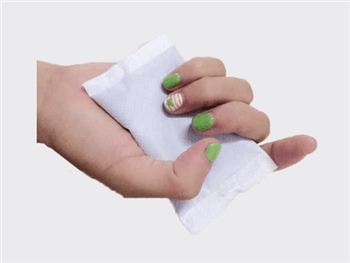Author:Kangdi 27-01-2018
For winter sports enthusiasts, hand warmer pad can mean the difference between calling it a day early and playing outside for as long as possible. In fact, anyone who braves cold temperatures might be tempted to try the little disposable pouches that emit warmth within seconds of being exposed to air.Disposable hand warmer pad turn up the heat in your mittens by means of an exothermic reaction that, in essence, just creates rust. Each pouch typically contains iron powder, salt, water, an absorbent material, and activated carbon. When the pouch is removed from its outer packaging, oxygen drifts across the pouch’s permeable covering. With salt and water present, the oxygen reacts with the iron powder located inside to form iron oxide (Fe2O3) and release heat.
The absorbent material of hand warmer pad can be pulverized wood, a polymer such as polyacrylate, or a silicon-based mineral called vermiculite. It helps retain the moisture so that the reaction can occur. The activated carbon helps to evenly disperse the heat produced, which can average 135 °F.
Although the chemistry of disposable hand warmer pad is simple, their engineering is more complicated. “You want to make this thing act quickly because people like to open up the packet and feel warm right away, but you also want it to last a long time. To lengthen the time a hand warmer lasts, some companies opt to increase the amount of iron in the packet
Another strategy is to experiment with the iron powder. If you vary the raw materials in the hand warmer pad, you can change how quickly the reaction happens or how much of the warmer is reacted at one time. For example, the greater the surface area of the iron, the more it can react with oxygen to produce heat.
To extend the shelf life of hand warmer pad, the outside wrapper is specially chosen to ensure that minimal amounts of oxygen get in and minimal water gets out. Any old plastic, and the hand warmers will last a week and die, because oxygen can get in and spoil the product. The outside wrappers are usually made of polymers such as the plastic polyethylene.

 0086 19937104978
0086 19937104978




